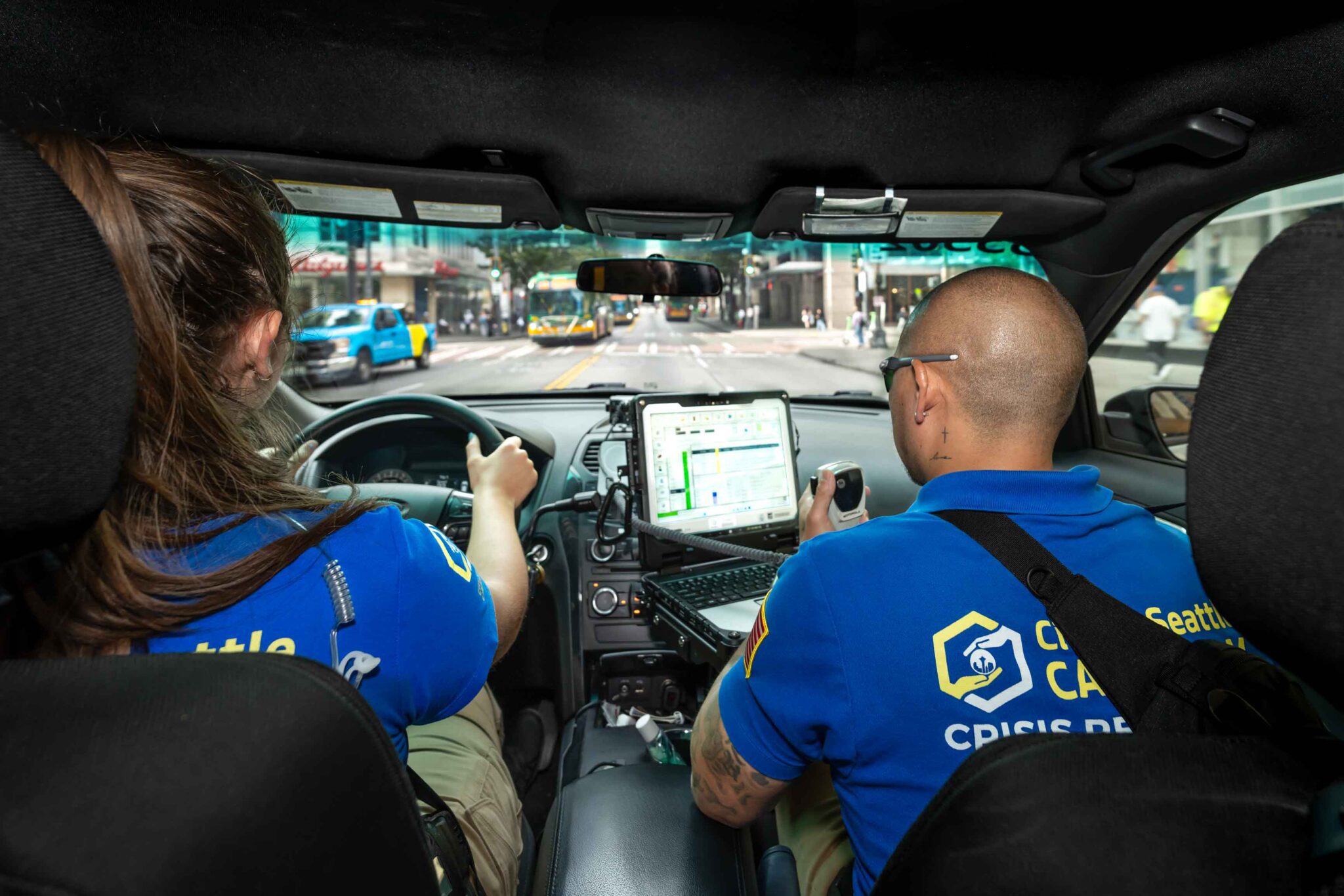
Seattle – Today, Mayor Bruce Harrell celebrated the two-year anniversary of the creation of the Community Assisted Response and Engagement (CARE) department, combining Seattle’s 911 Center with the new Community Crisis Responder (CCR) team. Initially launched as a small team with limited hours and service area, CCRs steadily expanded in size and footprint and have been successfully and safely dispatched to over 6,700 incidents over the past two years as an alternative to a police response. This integrated model pairs call-taking and dispatch with unarmed behavioral health responders, giving Seattle a new way to respond to non-violent crisis calls while preserving police and fire resources for where they are needed most.
“I’m proud to celebrate two years of the CARE Department and our Community Crisis Responder pilot program, which is now becoming a permanent part of Seattle’s public safety system. CARE represents the fulfillment of our vision for a comprehensive approach to public safety – a third branch working alongside police and fire to ensure every resident receives the right response at the right time,” said Mayor Harrell. “I want to thank Chief Barden and all the dedicated CARE employees for their exceptional work connecting people in crisis with compassionate care and vital services. I look forward to celebrating this department’s continued success for many years to come.”
Under the new police contract announced by Mayor Harrell earlier this week, there are no longer any limits on how many CARE responders can be hired and they can be solo dispatched to low-acuity emergency calls. Mayor Harrell’s public safety sales tax plan would provide $9.5 million to double the number of CARE Community Crisis Responders (CCR) with 24 new positions in 2026, as well as supervisors, a new training manager, and additional equipment. The expansion will increase the number of CCRs on staff and extend service hours, ensuring more Seattle residents have access to compassionate, effective crisis response. The investment will also add 12 dispatcher and call taker positions to ensure the 911 Center, which has already fielded more than 581,000 calls and texts in 2025, is fully staffed.
“Today we are significantly closer to achieving the vision of three co-equal departments of first responders, and a Seattle 911 equipped to send the best first response to a call. Philosophically, the police and fire departments represent physical safety and health provision; and the CARE department represents mental and emotional health provision,” said CARE Chief Amy Barden. “All three departments should and must be anchored in a philosophy of rehabilitation. I congratulate the pilot team of CARE responders and express my gratitude to the outstanding professionals in Seattle 911 who have made all this progress possible, who have converted a theory and a dream into reality.”
The Seattle CARE department represents a new paradigm in public safety, a third City department which works in partnership with police and fire and is focused on helping people in need of behavioral health care. Seattle’s unique approach to diversified emergency response is designed to connect people in crisis with help and free up police resources to answer the calls where they’re needed most. CARE’s model and practices were highlighted by the National League of Cities as a case study of the “Community Response Model” as part of their Reimagining Public Safety Initiative.
Since launching in late 2023 as a limited pilot of six responders focused on Downtown and the Chinatown-International District, the CCR program has steadily expanded and demonstrated strong results. In 2024, the pilot expanded to additional neighborhoods and seven days a week with 10 additional responders. In early 2025, it added more CCRs and expanded citywide, responding to more than 5,000 incidents citywide. Today, CCRs operate citywide seven days a week to ensure reliable response times and the ability to surge resources to emerging needs in partnership with 9-1-1.
CARE recently launched a digital dashboard, enabling the public to view data from 2024 to date, showing call volume by precinct, the busiest times of day for Community Crisis Responders and most frequent call types.
What People Are Saying
Charlotte Joseph, Deputy Chief CARE
“Seattle 9-1-1 is extremely grateful for the opportunity to work collaboratively with our public safety partners at SPD, SFD, and the Community Crisis Responders with the goal of providing the community with the best first response. The work done in 9-1-1 is essential to the public safety ecosystem. We remain dedicated to employee development, as we focus on enhancing skillsets and knowledge about the alternative response options and best practices within public safety.”
Catriana Hernandez, CARE Crisis Response Manager
“We are beyond excited to celebrate our two-year anniversary. It was no small feat in standing up a new program. This has only been made possible through our partnership with local government, public safety, and community services. They have tirelessly supported our emerging nationwide vision of a more holistic, adaptable, and data-driven approach to mental health emergencies”